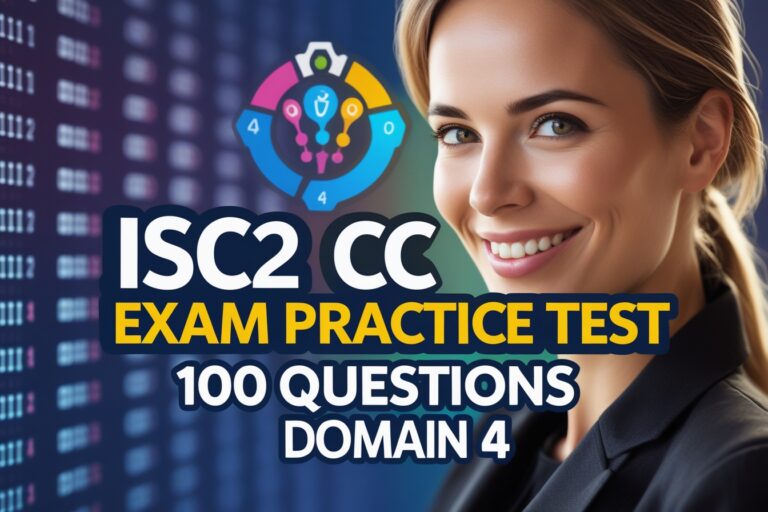1. Which of the following are the proposals for multiprocessor thread scheduling and processor assignment?
i) Load Sharing ii) Gang Scheduling iii) Dynamic Scheduling iv) Load Scheduling
A) i, ii and iii only
B) ii, iii and iv only
C) i, iii and iv only
D) All i, ii, iii and iv
2. In ………………… a set of related threads is scheduled to run on a set of processors at the same time, on a one to one basis.
A) Load Sharing
B) Gang Scheduling
C) Dynamic Scheduling
D) Load Scheduling
3. In a……………… approach for multiprocessor thread scheduling and processor assignment, processes are not assigned to a particular processor.
A) Load Sharing
B) Gang Scheduling
C) Dynamic Scheduling
D) Load Scheduling
4. In …………………. approach, the scheduling routine of the operating system is run of that processor to select the next thread.
A) Load Sharing
B) Gang Scheduling
C) Dynamic Scheduling
D) Load Scheduling
5. Which of the following is/are the advantages of load sharing.
i) Preempted threads are unlikely to resume execution on the same processor.
ii) The central queue occupies a region of memory that must be accessed in a manner that enforces mutual exclusion.
iii) If all threads are treated as a common pool of threads, it is unlikely that all of the threads of a program will gain access to processors at the same time.
A) i and ii only
B) ii and iii only
C) i and iiii only
D) All i, ii and iii
6. scheduling overhead may be reduced on …………………. because a single decision affects a number of processors and processes at one time.
A) Load Sharing
B) Gang Scheduling
C) Dynamic Scheduling
D) Dedicated processor assignment
7. An ……………. has a deadline by which it must finish or start, or if may have a constraint on both and finish time.
A) hard real-time task
B) soft real-time task
C) aperiodic task
D) periodic task
8. An operating system is ……………………. to the extent that it performs operations at fixed, predetermined times or within predetermined time intervals.
A) deterministic
B) responsiveness
C) reliable
D) operative
9. ………….. is concerned with how long, after acknowledgment, it takes an operating system to service the interrupt.
A) Deterministic
B) Responsiveness
C) Reliable
D) Operative
10. …………………. is concerned with how long operating system delays before acknowledging an interrupt.
A) Determinism
B) Responsiveness
C) Reasonableness
D) Operatives
11. State whether the following statements are True or False for the features of the real-time operating system.
i) fast process or thread switch
ii) the ability to respond to external interrupts quickly.
iii) minimization of intervals during which interrupts are enabled.
iv) preemptive scheduling based on priority
A) i, ii and iii only
B) ii, iii and iv only
C) i, ii and iv only
D) All i, ii, iii and iv
12. ………………….. is a characteristic that refers to the ability of a system to fail in such a way as to preserve a system to fail in such a way as to preserve as much capacity and data is possible.
A) User control
B) Responsiveness
C) Fail soft operation
D) Reliability
13. The result of the ……………… in real-time scheduling is a schedule that determines, at run time, when a task must begin execution.
A) Static table-driven approaches
B) Dynamic best effort approaches
C) Static priority-driven preemptive approaches
D) Dynamic planning based approaches
14. No feasibility analysis is performed in ………………. of real-time scheduling.
A) Static table-driven approaches
B) Dynamic best effort approaches
C) Static priority-driven preemptive approaches
D) Dynamic planning based approaches
15. In …………….. feasibility is determined at run time rather than offline prior to the start of execution.
A) Static table-driven approaches
B) Dynamic best effort approaches
C) Static priority-driven preemptive approaches
D) Dynamic planning based approaches
16. In …………….. of real-time scheduling, the system tries to meet all deadlines and aborts any started process whose deadline is missed.
A) Static table-driven approaches
B) Dynamic best effort approaches
C) Static priority-driven preemptive approaches
D) Dynamic planning based approaches
17. ………………. is applicable to tasks that are periodic. Input to the analysis consists of the periodic ending deadline and relative priority of each task.
A) Static table-driven scheduling
B) Dynamic best-effort scheduling
C) Static priority-driven preemptive scheduling
D) Dynamic planning based scheduling
18. ………………. makes use of the priority-driven preemptive scheduling mechanism common to most non-real-time multi-programming systems.
A) Static table-driven scheduling
B) Dynamic best-effort scheduling
C) Static priority-driven preemptive scheduling
D) Dynamic planning based scheduling
19. With ……………… after a task arrives, but before its execution begins, an attempt is made to create a schedule that contains the previously scheduled tasks as well as the new arrival.
A) Static table-driven scheduling
B) Dynamic best-effort scheduling
C) Static priority-driven preemptive scheduling
D) Dynamic planning based scheduling
20. …………………. is the approach used by many real-time systems that are currently commercially available.
A) Static table driven scheduling
B) Dynamic best-effort scheduling
C) Static priority-driven preemptive scheduling
D) Dynamic planning based scheduling
Answers
1. A) i, ii and iii only
2. B) Gang Scheduling
3. A) Load Sharing
4. A) Load Sharing
5. D) All i, ii and iii
6. B) Gang Scheduling
7. C) aperiodic task
8. A) deterministic
9. B) Responsiveness
10. A) Determinism
11. C) i, ii and iv only
12. C) Fail soft operation
13. A) Static table-driven approaches
14. B) Dynamic best effort approaches
15. D) Dynamic planning based approaches
16. B) Dynamic best effort approaches
17. A) Static table-driven scheduling
18. C) Static priority-driven preemptive scheduling
19. D) Dynamic planning based scheduling
20. B) Dynamic best-effort scheduling







